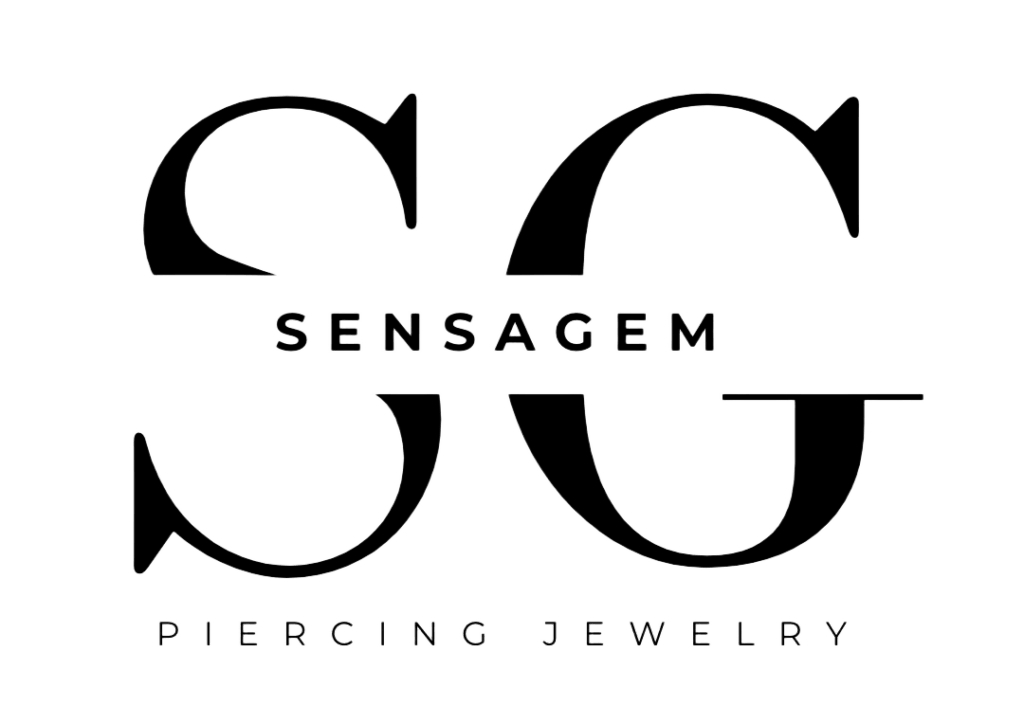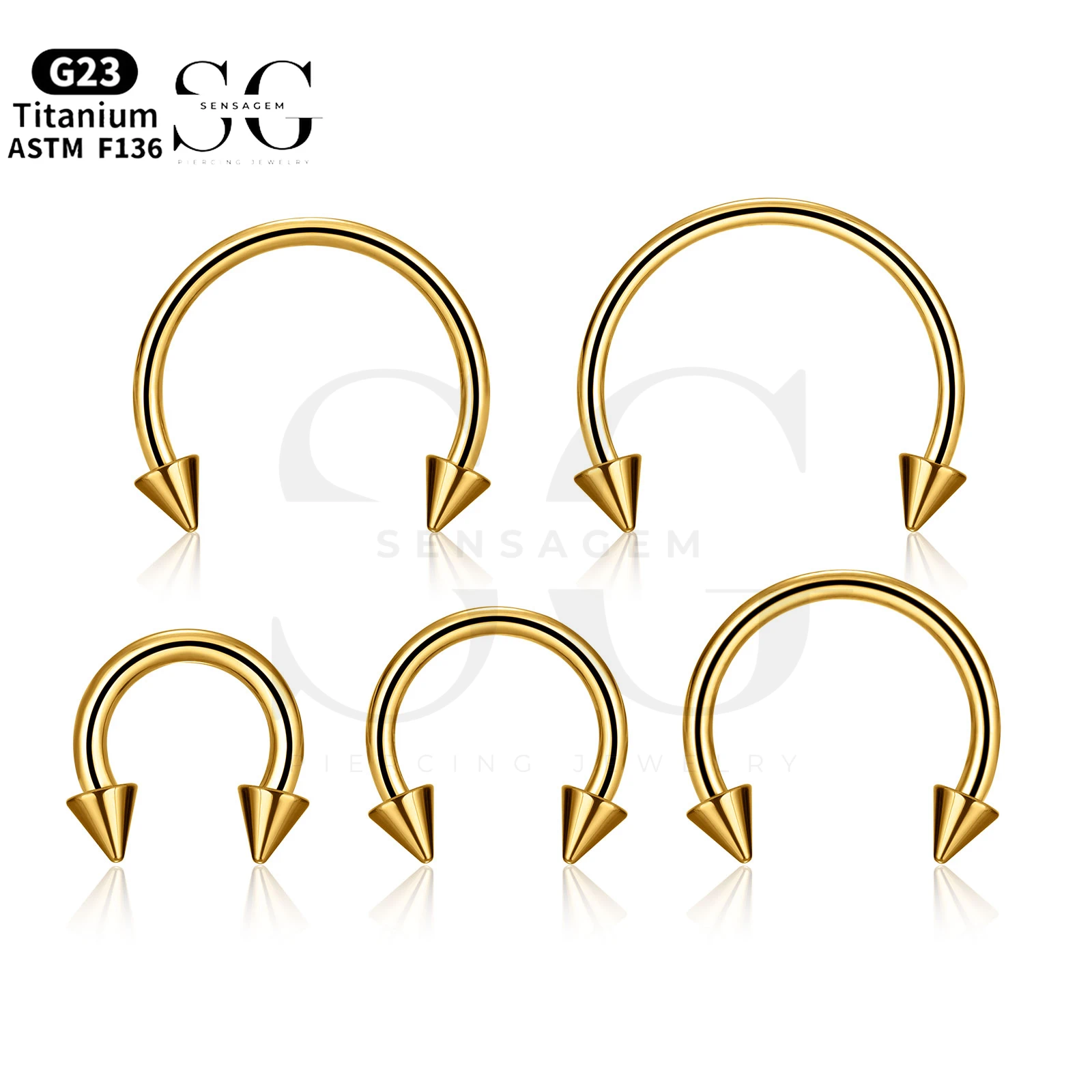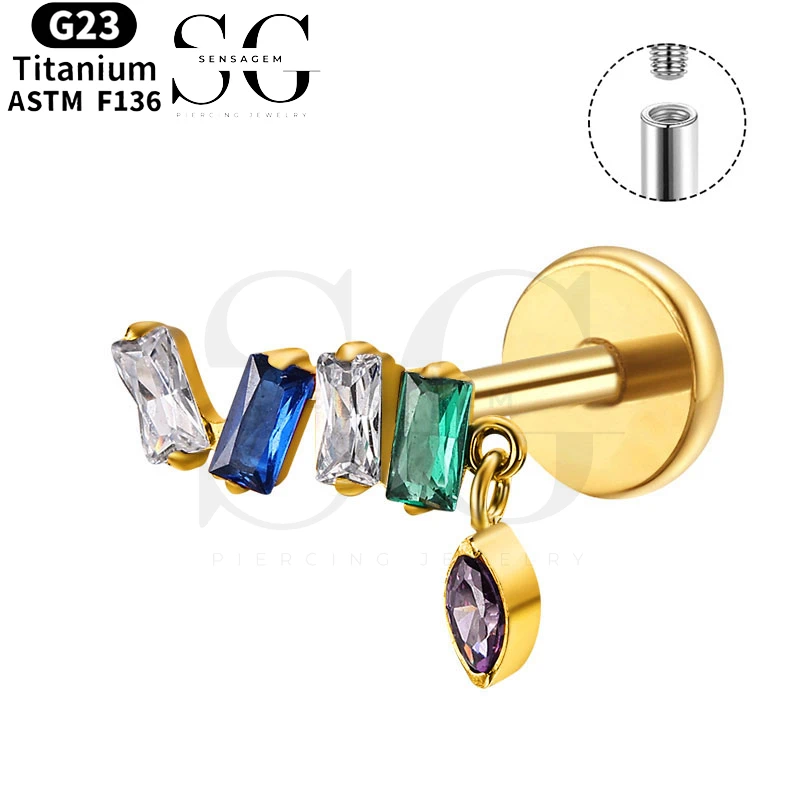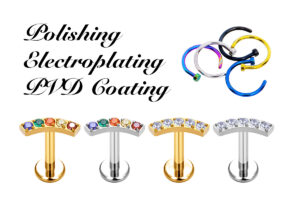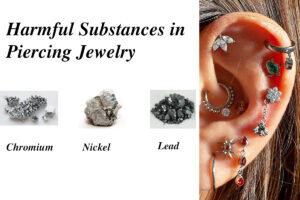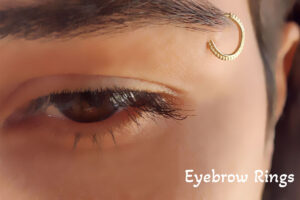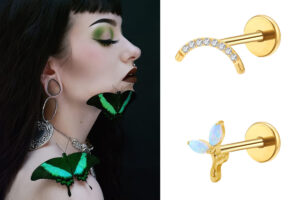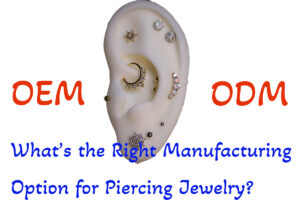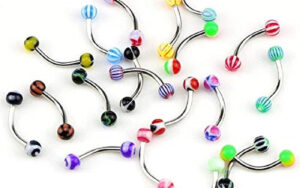Introdução
Nos últimos anos, ear piercings have evolved far beyond the traditional lobe. More people are looking for creative ways to personalize their look, and two rising stars in the piercing world are the vertical helix piercing and the hidden helix piercing. These styles are not only visually striking but also provide new ways for clients to express themselves through unique placement and specialized jewelry.
Neste guia, we’ll break down the differences between vertical and hidden helix piercings, walk you through the procedure and healing process, and explore the types of jewelry that work best—especially hidden helix jewelry, which is rapidly growing in popularity.
What Is a Vertical Helix Piercing?
O vertical helix piercing is a bold variation of the standard helix. Instead of a traditional horizontal placement that goes straight through the cartilage on the outer rim of the ear, a vertical helix is pierced in a more upright, top-to-bottom direction.
This gives it a striking, modern look and allows for creative jewelry pairings. While still considered a cartilage piercing, the vertical helix opens new opportunities for piercers and clients alike.
Principais recursos:
Placement: Outer upper ear, pierced vertically (top to bottom).
Jewelry types: Halteres, Barbells curvos, or custom vertical pieces.
Healing time: 6 para 12 meses, depending on aftercare and anatomy.
Vertical helix piercings can be customized depending on the shape of the client’s ear and their desired aesthetic. Some people prefer a more forward-facing vertical placement to really showcase the jewelry.
What Is a Hidden Helix Piercing?
Hidden helix piercing is one of the trendiest and most mysterious ear piercings today. As the name suggests, it’s strategically placed in a part of the ear that makes it partially or fully concealed, especially from the front.
Clients often love the hidden helix because it feels like a secret accessory—one that’s subtle, elegant, and unexpected. It’s a perfect choice for people who want a piercing that doesn’t immediately stand out but still adds personality and edge.
Principais recursos:
Placement: Usually behind the upper cartilage ridge or on the underside of the helix.
Joia: Flat-back labrets or micro studs, often in titanium or surgical steel.
Healing time: Similar to other helix piercings, around 6–12 months.
Depending on the placement, hidden helix piercings may require a bit more skill from the piercer and a good understanding of the client’s anatomy. But when done well, the result is stunning.
Vertical vs Hidden Helix Piercing: What’s the Difference?
While both piercings are located in the helix area, their presentation and aesthetic impact are quite different.
Recurso | Vertical Helix Piercing | Hidden Helix Piercing |
|---|---|---|
Visibility | Fully visible from most angles | Often concealed or partially visible |
Jewelry Type | Halteres, Barbells curvos | Flat-back studs, threadless ends |
Aesthetic | Bold, structured, olhar nervoso | Subtle, mysterious, minimalistic |
Tempo de cura | 6–12 months | 6–12 months |
Anatomy Needs | Moderate | Can require more custom assessment |
Clients choosing between these two styles usually base their decision on lifestyle, fashion preferences, and the level of visibility they’re comfortable with.
Choosing the Right Jewelry for Helix Piercings
No piercing is complete without the right jewelry, and when it comes to vertical and hidden helix piercings, choosing the appropriate piece makes all the difference in comfort and healing.
For Vertical Helix Piercing:
Curved barbells help reduce pressure during healing.
Titânio ou 316L aço cirúrgico is recommended for biocompatibility.
Minimalist designs or double-ended pieces can create a clean, industrial look.
For Hidden Helix Piercing:
Flat-back labrets are preferred for a flush finish that minimizes snagging.
Threadless jewelry is becoming the standard due to its comfort and ease of use.
Smaller, discreet studs are ideal for those wanting a minimalistic look.
Always advise clients to avoid cheap materials or externally threaded jewelry during healing. For best results, recommend ASTM F136 titanium or implant-grade steel.
Healing Process and Aftercare Tips
Like all cartilage piercings, vertical and hidden helix piercings require patience and proper care to heal well. Cartilage tissue receives less blood flow than other parts of the ear, so healing can take anywhere from 6 para 12 meses, depending on the individual and their habits.
General Aftercare Routine:
Clean twice daily with sterile saline solution.
Avoid sleeping on the piercing side for the first few months.
Don’t rotate or move the jewelry—this can delay healing.
Avoid swimming pools and hot tubs during the initial healing phase.
Always dry the area gently after showers.
Para hidden helix piercings, extra care should be taken because the placement can make it harder to clean. Instruct clients to gently lift the outer ear to access the piercing site if necessary.
Signs of Trouble:
Persistent redness or swelling after the first few weeks.
Yellow or green discharge (as opposed to clear lymph).
Excessive pain or a warm sensation at the piercing site.
Always encourage clients to reach out to their piercer or a medical professional if they’re unsure about symptoms.
Erros comuns para evitar
Even experienced clients can make mistakes that slow down healing or cause complications. Make sure to educate them on what not to do:
Switching jewelry too soon: Changing jewelry before the piercing has fully healed can lead to irritation or infection.
Using harsh products: Avoid alcohol or hydrogen peroxide, which can dry out the tissue.
Touching with unwashed hands: This is one of the quickest ways to introduce bacteria.
Wearing tight headphones or helmets: Pressure and friction can irritate cartilage piercings, especially hidden ones.
As a piercer, clear communication about aftercare is one of the best ways to ensure happy, repeat clients.
How to Style Vertical and Hidden Helix Jewelry
Styling is where things get fun. Once the piercing is healed, clients can express their personality with a wide range of jewelry choices.
Styling Vertical Helix Piercings:
Stacked barbells in matching or contrasting metals.
Curved barbells with decorative ends (e.g., opals, picos, gems).
Industrial-inspired pieces for a more alternative aesthetic.
Styling Hidden Helix Piercings:
Minimalist studs in gold or black titanium for an understated look.
Threadless ends with small gems that sparkle just beneath the ear’s curve.
Asymmetrical designs that play off other visible piercings.
The hidden helix offers a unique opportunity for clients to pair subtlety with style. Many use it as a hidden gem that complements a more visible ear stack.
Trends and Client Preferences in 2025
The piercing industry is evolving fast, and both vertical helix e hidden helix piercings are at the forefront of this trend. Clients are increasingly seeking out:
Unique placements that feel personal and fresh.
Low-profile jewelry that fits their work or lifestyle.
High-quality materials that promote faster healing and reduce the risk of allergies.
Professional studios are also investing more in threadless jewelry systems e biocompatible metals like ASTM F136 titanium and 316L surgical steel. These materials not only meet client expectations but also reflect the professionalism and care of the studio.
Pro Tips for Professional Piercers
If you’re a piercer looking to expand your offerings, here are a few tips to master vertical and hidden helix piercings:
Assess client anatomy carefully. Not every ear is suited for every placement.
Use the right tools. Angled forceps and straight needles can offer more precision.
Start with high-quality jewelry. Choose internally threaded or threadless options in titanium or surgical steel.
Offer styling consultations. Help your clients visualize how their helix piercings will look alongside others.
Set realistic expectations. Be honest about healing times and stress the importance of aftercare.
Providing excellent service, clean technique, and expert advice helps build long-term trust—and keeps your studio top-of-mind when clients want their next piercing.
